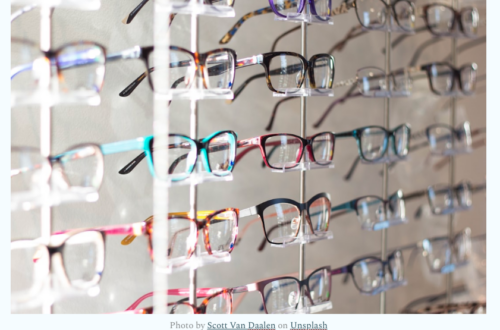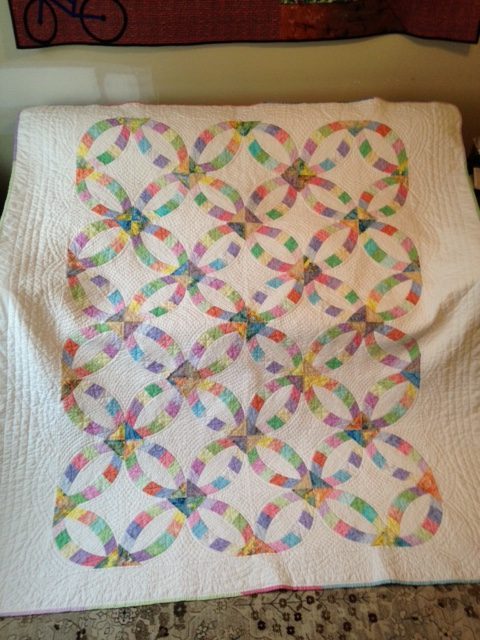
National Quilting Month – and Health?
March is National Quilting Month. What does this have to do with health and Decipher Your Health? A lot!

We all need downtime. Stress, whether it’s from work, family, or anywhere else can truly make us ill. Chronic stress can cause physical illnesses like headaches, hypertension, heart disease, type 2 diabetes and more. It can cause addiction disorders, as well as depression and anxiety.
Yet, we spend much of our lives under stress. We rush from job to job, filled with many responsibilities that we may not enjoy. We have bills to pay and prices are rising. We may have family responsibilities, be they raising children or helping older relatives. We’re busy. We’re too busy.
Taking time for yourself can be hard. But we need to do it so that we can let go of some of the chronic stress. We need to take care of ourselves. As that saying goes, on a plane, in case of emergency – put your own oxygen mask on first. There’s a reason for that. If we aren’t healthy, we can’t do what we need to do for ourselves and therefore, be there for others.
Any type of activity works
Any kind of hobby, craft, or activity is good for your mental and physical health. This study from last year looked at over 90,000 people from 16 countries, aged 65 and over. The people who participated in the study reported that their hobbies improved their physical and mental health. Interestingly, how many people had hobbies varied between countries; 96% of Danish people said they had a hobby compared with 51% of Spanish people. Despite the difference in how many people had hobbies, the link between hobbies and good health was consistent across all countries.
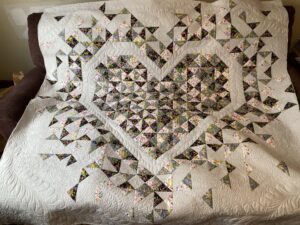
The act of making something, the process from planning to the final product, can take you away from stresses of all kinds. Crafting may even slow down cognitive decline and reinforce fine and gross motor skills.
I wrote a few articles on quilting and mental health a while ago for NextAvenue.org. In The Creative Art of Quilting I shared stories from someone who used quilting to heal from a bad break-up, a quilting teacher/celebrity who used quilting to help recover after a quadruple bypass surgery, and the founder of the Survivor Quilt Project, which helped incest survivors begin their healing journeys. In How Quilting Can Bring Healing, I told the story of a young woman who lost everything because of addiction, but quilting gave her a sense of purpose and she turned her life around.
But quilting – and other crafts – don’t have to have such a profound impact on someone’s health, either mental or physical. It’s the small things in life that make a big difference in how we feel about ourselves.
Art, of any type, can help you be seen
What do I mean by that? Many people who create things belong to some sort of community. These communities can be online or in person. Regardless of how the communities meet, they give artists and crafters an opportunity to share their work, ask questions, share supplies, and discuss issues related to their art. Participating in a community or art exhibition allows others to see what you produced and give you feedback. And people see not just your creations, but you too. In a world when we may feel invisible sometimes, it’s nice to be seen.
Quilting has been a communal activity for generations. People who didn’t have much would piece together fabric remnants to make a cover to keep them warm, and to show love when it was for a gift, often for a wedding.
Personally, I love it when people see my quilts, either in person or online, and tell me what they like about them.
Crafts make you think
When working on a challenging work project whether it be a physics equation, symphony or a book, stepping away to craft can clear the mind and better allow ideas to take hold. Whether you’re knitting socks, cutting wood, or making fishing flies, you engage different parts of the brain. You need to count, calculate, and measure. You need to look at colors and shapes. Your brain has to concentrate to do these things – and that is a good thing. This may help ward off or slow down cognitive decline. Not to mention, many people who do these crafts are also constantly learning. I don’t know many artists and crafters who are doing exactly the same thing now that they were doing a few years ago. Part of the joy of these activities is learning how to do things better, differently, or in different styles.
You can feel accomplished
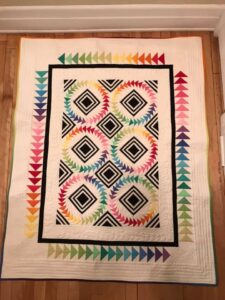
Giving away or selling your work can activate the pleasure centers of the brain and help you feel accomplished. I don’t sell my quilts. I give them away freely as gifts or “hug quilts” to people who are going through a hard time. They never know they’re coming until they open that package. But I also give many quilts to an organization here in Montreal called Bread and Beyond. They pack boxes to give to unhoused people who are finally going into a home of their own, women in shelters, and refugees. They include my quilts in those boxes. I cannot tell you how much joy this gives me. I very likely get way more out of those quilts than the recipients do.
I could go on and on about the benefits of any type of craft. Of course, the challenge to any hobby is the investment of time and money. But there may be workarounds. For example, some quilt guilds give their members fabric if they’re making charity or donation quilts. Old pieces of work can be repurposed into new pieces. Estate sales and other community type sales might offer knitting or crochet yarn, or other hobby supplies to buyers.
When I’m not writing or spending time with my family, I’m quilting. And I’ll do it for as long as I can. It helps make me whole. If you don’t have a craft, art, or hobby you enjoy, I hope you can find something. And treat yourself to some fun and joy. It’s worth it.
Want to see a few more of my creations?

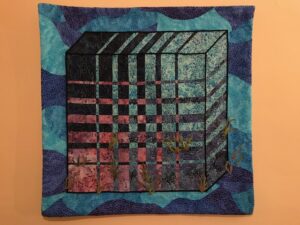
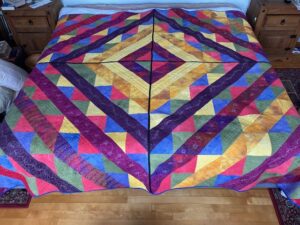

Disclaimer
The information in this blog is provided as an information and educational resource only. It is not to be used or relied upon for diagnostic or treatment purposes.
The blog does not represent or guarantee that its information is applicable to a specific patient’s care or treatment. The educational content in this blog is not to be interpreted as medical advice from any of the authors or contributors. It is not to be used as a substitute for treatment or advice from a practicing physician or other healthcare professional.



